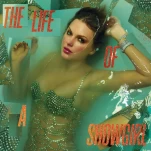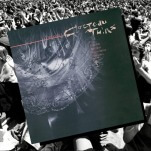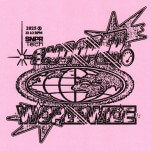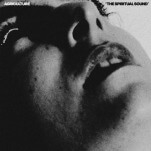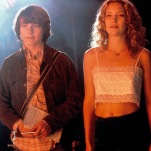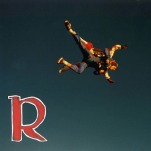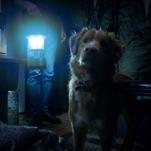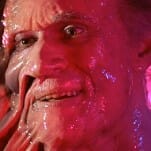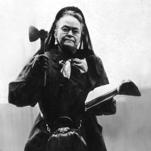The 10 Best Albums of January 2019
Photo by Nik Freitas
2019 has finally delivered its first load of albums, and January has already proved to be a memorable month of releases. We can already foresee several January albums that will be on heavy rotation in the office throughout the remainder of the year, including new LPs from Sharon Van Etten, Pedro The Lion and Better Oblivion Community Center. Sharon Van Etten made her most confident record to date with Remind Me Tomorrow, David Bazan made his first Pedro The Lion record in 15 years with Phoenix and Conor Oberst joined forces with Phoebe Bridgers to form one of the most exciting supergroups in recent memory, Better Oblivion Community Center.
Here are the 10 best albums of January, according to Paste’s music critics.
10. Mike Krol: Power Chords
Rating 7.5
Fuzzy garage rock has rarely contained this much wistful heartache. The previous album from Los Angeles-based musician Mike Krol, 2015’s Turkey, clocked in at just 18 minutes, but packed in a year’s worth of rambunctious potency. His new record, Power Chords, clocking it at nearly double the length of its predecessor, feels almost indulgent in comparison, but with its added running time comes a bit more thematic focus. Power Chords is a distinctly ugly record, but that’s part of the appeal. Though its sonic palette isn’t wide-ranging by any means, Krol’s grubby rock is better when its knees are scraped, eyes are bloodshot and heart is ripped open. Krol risks overshadowing his angsty songs with his thick, Stroke-like vocal filters, but they bring this angst to life by adding a dimension of teenage nostalgia with its bedroom DIY feel. While the sonics can feel tiresome after a while, Krol ends on a high note with his extremely muddy cut, “The End,” which is nicely offset with a piercing synth interlude. Power Chords is much more lyrically mature and musically adept than your average garage rock record, and its teenage sheen might urge you to fanatically scroll the lyrics on your notebook or bedroom wall of choice. —Lizzie Manno
9. The Flesh Eaters: I Used To Be Pretty
Rating 7.5
Founded 40-odd years ago by sole permanent member Chris Desjardins (known as Chris D.), the Flesh Eaters came from the same late-’70s L.A. scene that yielded bands including X, the Blasters and Los Lobos—all of whom lent members to the Flesh Eaters’ touchstone 1981 album A Minute to Pray, a Second to Die. As luck would have it, that’s the roster that reconvened for the first time since then to back Desjardins on I Used to Be Pretty, the Flesh Eaters’ first new album in 15 years. Dave Alvin and Bill Bateman of the Blasters; John Doe and DJ Bonebrake of X; and Steve Berlin from Los Lobos form a powerful combo, surging along with Chris D. in what amounts to a master class in taut punk-rockology, with an antagonistic streak. Chris D. makes the most of his all-star lineup, revisiting songs from throughout the Flesh Eaters catalog and laying down what in most cases are definitive new versions. Though the versions of the songs on I Used to Be Pretty sound fantastic, it can be tricky messing around with the alchemy of previously recorded music. There was a certain charm to the ramshackle, handmade feel of these tunes as they appeared on the original albums. That said, these gussied-up, more professional arrangements show Chris D.’s songs in the best possible light. Their power, their attitude and their sheer trashy abandon have never been more evident, which means Desjardins in a way is finally getting his due. —Eric. R. Danton
8. Steve Gunn: The Unseen in Between
Rating 7.6
Steve Gunn has a way of making the unremarkable remarkable and his latest album, The Unseen in Between, may be the greatest example. The Pennsylvania-born, Brooklyn-based singer/songwriter has been making albums since 2007, and he’s recorded with the likes of Kurt Vile, Michael Chapman and Hiss Golden Messenger. Gunn’s best known for his entrancing guitar lines and though this new album doesn’t break away from that tradition, it achieves them in a different way. Gunn has dabbled with more experimental recordings throughout his career but over the last few years, he’s eased further into more accessible territory. His latest effort, The Unseen in Between, is his most accessible to date with simpler arrangements and a largely acoustic focus. However, the hypnotic sensibilities that he’s become synonymous with are still wildly apparent here. On The Unseen in Between, Gunn noticeably removes himself from his songwriting as he prefers to be a message-bearer for the stories of forgotten souls. There’s a faint despair in these songs, but he makes up for it with his undying devotion to capture them as vividly as possible—in a way that doesn’t glorify the subjects’ predicament, but highlights their quirks and shines a spotlight on their wisdom. There’s an innate comfort that comes with listening to Gunn’s music and The Unseen in Between is that Sunday afternoon moment of self-care that you need in your life. —Lizzie Manno
7. You Tell Me: You Tell Me
Rating 7.8
The music of You Tell Me exists in this glorious place where several decades of British pop gently collide. That is to be expected considering the pedigree of the two singer/songwriters at the helm of this project. Peter Brewis is one-half of the flint-edged post-punk group Field Music, and Sarah Hayes has logged time in the glittering indie pop outfit Admiral Fallow and dabbled in traditional folk as a solo artist. Add in the detail that the pair met for the first time at a Kate Bush concert and the sound of You Tell Me may start coming into focus even before you get a chance to listen to their self-titled debut. The pair’s 11-song album weaves in and out of those varied sonic worlds with ease and wide-eyed joy, often grabbing little fragments into a lovely patchwork. Opener “Enough To Notice” layers the dreamy spirit of The Pentangle and their ‘70s psych-folk ilk with bubblegum pop, while “Water Cooler” and “Get Out Of The Room” imagines The Blue Nile’s sophisticated gleam meeting a hearty post-rock rumble. There is a tendency within the running time of You Tell Me for the duo to maintain their cruising altitude for long stretches when they clearly have the abilities to hit the accelerator and soar. The languid pace that they lend to the majority of the songs here suits them just fine, but put up against the peppier numbers, you may long for a bit more variation. At the same time, You Tell Me concocts such a spell with their debut that the journey will still delight and intoxicate. —Robert Ham
6. Maggie Rogers: Heard It In A Past Life
Rating 7.9
In a way, Maggie Rogers is the exemplary model of a modern pop star. Her success story is one that’s exclusive to our times, when the Internet has the power to make moguls out of memes overnight. But Rogers is no Mason Ramsey: Her story begins not with a Walmart yodel, but with an unbelievably perfect demo, played for Pharrell Williams during a songwriting masterclass at New York University in 2016. The video of his reaction (stunned, in the best way) went viral, and Rogers stumbled into sensation. As Pharrell more or less said upon hearing that first cut of “Alaska” (which now boasts almost 70 million Spotify streams and club remixes for days), Maggie Rogers is singular. Other Internet-made stars flake and fade, but Rogers has continued to burn oh-so bright, incomparable in terms of musical style. While she’s kept us satiated with an EP and a crop of sparkling singles, we’ve been waiting for Heard It In A Past Life for a few years. Now that it’s here, one thing’s clear: Maggie Rogers is a pure pop star and a deserving one, at that. She’s self-assured in a way other radio stars aren’t, never afraid to fold in her folk background and do whatever she wants. And you just can’t help but root for her. If Maggie Rogers can find a way to exist alongside the likes of Billie Eilish, she’ll be the next big thing in pop. The charts are starved for something real and down-to-earth, and her songs, while heavily produced in comparison to some of her folksier beginnings, have an earnestness to them that can’t be fabricated. Rogers’ career may have first sparked on the internet, but now it’s a fire burning IRL. —Ellen Johnson
5. Pedro The Lion: Phoenix
Rating 8.0
It was just coincidence that David Bazan dropped his Pedro the Lion moniker in 2006, around the same time he “deconverted” from Christianity. But the latter seemed to feed into the former, and when Bazan’s solo output—five albums since 2009—exceeded the four LPs that Pedro the Lion had released between 1998-2004, it seemed like the band was over for good. Turns out it was just a long break: Bazan revived the band in 2017 and now Pedro the Lion is back with Phoenix, the singer’s first new album as Pedro in 15 years. Like the group’s earlier work, a theme runs through Phoenix. Arizona is where Bazan grew up, and where he discovered during a stop-over in 2016 that while our memories of a time and place stay frozen in our minds, the place itself continues to change and evolve. Though much of the album looks back on his youth, these 13 new songs aren’t a nostalgia trip so much as an effort to make sense of his present by examining the past. Most of Phoenix is rather more gentle. Bazan sings in wonder at discovering the freedom of two wheels when he was five on “Yellow Bike,” dreams of a nicer place to live on “Model Homes” and rues spending his allowance on candy and soda at the local convenience store rather than saving up for a coveted skateboard on “Circle K.” His voice remains robust and pleasantly rumpled, and the arrangements on these songs favor big, overdriven guitars. —Eric R. Danton
4. Twilight Sad: It Won/t Be Like This All The Time
Rating 8.2
Within seconds of hitting play on track one, it’s obvious that The Twilight Sad are changing things up on It Won/t Be Like This All The Time, the fifth studio album from the long-running Scottish post-punk band. Louder and more direct than ever, the initial hard-hitting and pulsating synths of “[10 Good Reasons for Modern Drugs]” are as in your face as anything lead singer James Graham and co. have released prior. A reintroduction of sorts similar to what the alien guitar feedback on Yeezus intro track “On Sight” did for Kanye West back in 2013. It Won/t Be Like This All The Time plays like the record The Twilight Sad were aiming to make with 2012’s No One Can Ever Know, an album that served as the band’s first attempt to go back to the drawing board after releasing Fourteen Autumns and Fifteen Winters and Forget the Night Ahead, two records a bit too similar for their own good. Here, guitarist/producer Andy MacFarlane twists up the volume and pushes the tempos into overdrive, creating a dizzying and urgent tone that barely ever lets up. As a result, this is their most listenable album, one that dials back the heavy-handed metaphors and overwhelming musical gloom for something more danceable and upbeat, though still dour as ever lyrically. —Steven Edelstone
3. Toy: Happy in the Hollow
Rating 8.4
Toy have always dabbled in the sinister, but the quintet’s fourth album, Happy in the Hollow, is their most wholehearted embrace of ominous murk. If their last LP, Clear Shot, was a moderately dark album, then Happy in the Hollow is near pitch-black with just a small lit torch to navigate through the darkness. While their previous albums leaned on a mix of psychedelia, krautrock and shoegaze, their latest full-length is much more fluid—injecting a bit of wiry post-punk, dialing back some of the indulgent psychedelic pastiches, and underscoring the sublime hooks and melodies that made them such a fascinating group in the first place. Knowingly or not, “Sequence One” provides a sturdy example of the album’s lyrical dynamic (”Smokey sentimental crush / Turns into atomic sludge”). Toy never fully commit to dewy-eyed romance or moody, winding sci-fi and instead, they occupy an arresting lyrical middle ground between the tangible and intangible. Their motorik rhythms, gloomy guitar work and Dougall’s spectral vocals result in a creepy aura while their various synths and keyboards either enhance its hair-raising quality or counteract it with shimmering pop crescendos. Their guitars are often intensely rhythmic and blistering or harrowing and atmospheric, but always with a distinct purpose. Despite not matching the thrilling highs of Clear Shot or their self-titled debut, Toy make a strong case for Happy in the Hollow as their most cohesive and compelling record. —Lizzie Manno
2. Better Oblivion Community Center: Better Oblivion Community Center
Rating 8.5
Phoebe Bridgers and Conor Oberst come from the same musical orbit. One could even argue, the two songwriters—age 24 and 38 respectively—are like long-lost musical siblings. Though at vastly different points in their careers, both musicians know how to crush and revive listeners with inspired woe, romantic poignancy and their instantly recognizable, consoling pipes. The stars aligned just in time for Bridgers and Oberst to write, record and surprise-drop a haunting new album together for a brand new project: Better Oblivion Community Center—which really is their band name and not actually the name of a utopian old folks home. Better Oblivion Community Center is an unsurprisingly tender, affecting excursion. Its largely upbeat instrumentation ebbs and flows with understated folky strums and scintillating keyboards, and the occasional ray of buoyant rock ’n’ roll peeks out just when you need some lighthearted relief from their lyrics. Though many male-female vocal duos lean heavily on duets, this pair elected to skirt that norm by singing mostly in unison and in harmony rather than engaging in the sometimes cheesy call and response. Much of the record could still loosely fall into the folk camp, but there are moments that you wouldn’t expect from Oberst and Bridgers. The throbbing electro keyboards of “Exception to the Rule,” the fuzzy rock surge at the end of “Big Black Heart” and the psychedelic guitar swells on “My City” all represent a venture into new frontiers. —Lizzie Manno
1. Sharon Van Etten: Remind Me Tomorrow
Rating 8.7
Singer/songwriter Sharon Van Etten has experienced a lot of change since the release of her last album, 2014’s Are We There, and they’re the kind of life-altering shifts—newfound romantic partnership, motherhood, career advancements—that are all but destined to reveal themselves in one’s art. And here, on her fifth studio effort Remind Me Tomorrow, those evolutions are apparent in a powerful sonic swerve, and in Van Etten’s desire to explore both nostalgia and rebirth, and maybe even how they intertwine. Remind Me Tomorrow is the first great rock album of the year, and it would behoove any and all of Van Etten’s fans, even those who staunchly prefer her folk-leaning material, and rock ‘n’ roll aficionados of all stripes to open their ears (and their hearts) to this beautifully executed pivot. And for all its bold sonic upheavals—the addition of drum machines and electric shred and cavernous synth—Remind Me Tomorrow maintains Van Etten’s gothic sensibilities. Sharon Van Etten was already one of the great lyricists of the ’10s, but with this breathtaking new project, she’s proved an artistic pliancy her contemporaries may not possess. She hit her stride with Are We There, but here she’s not even on the ground. —Ellen Johnson
